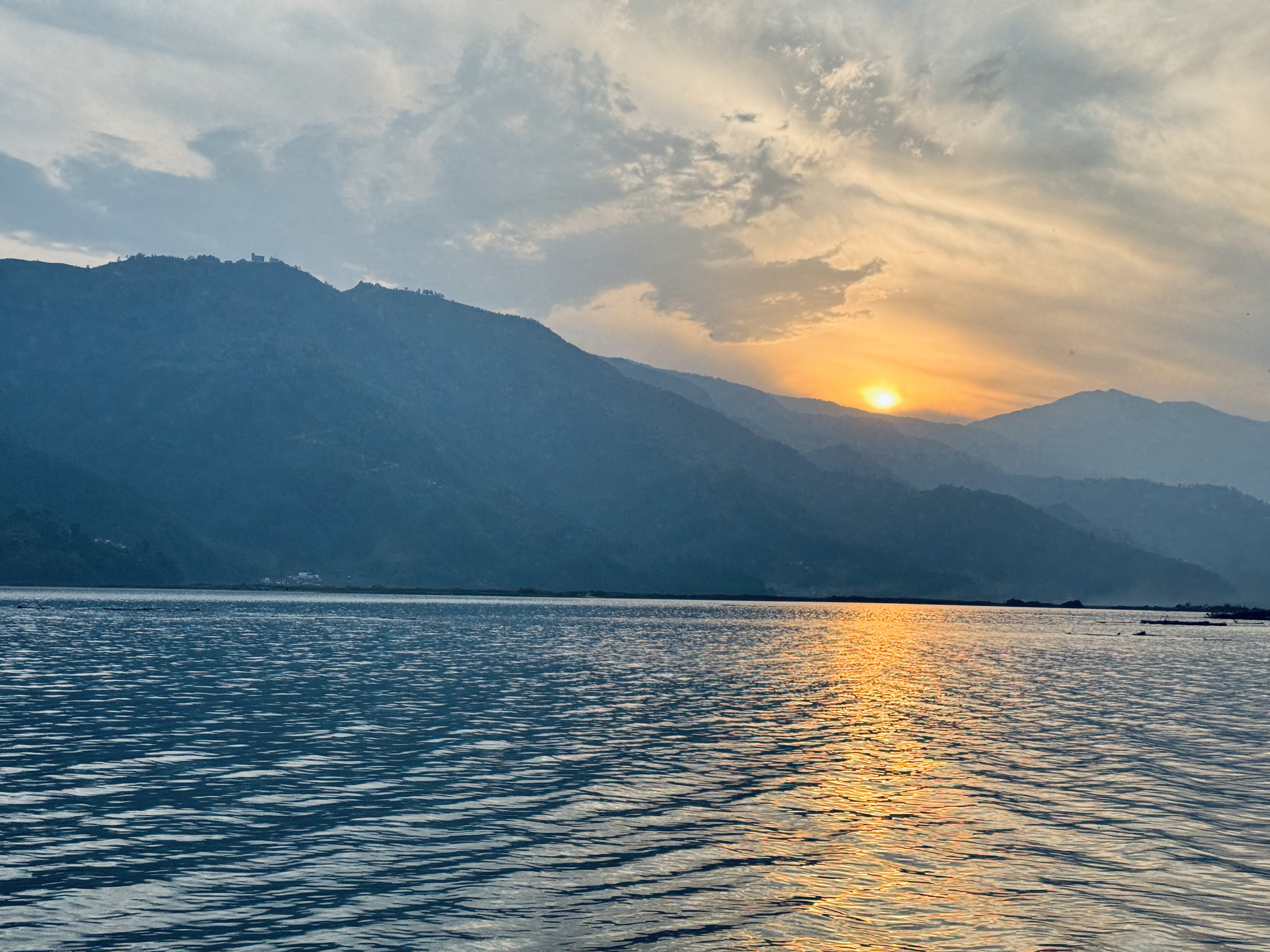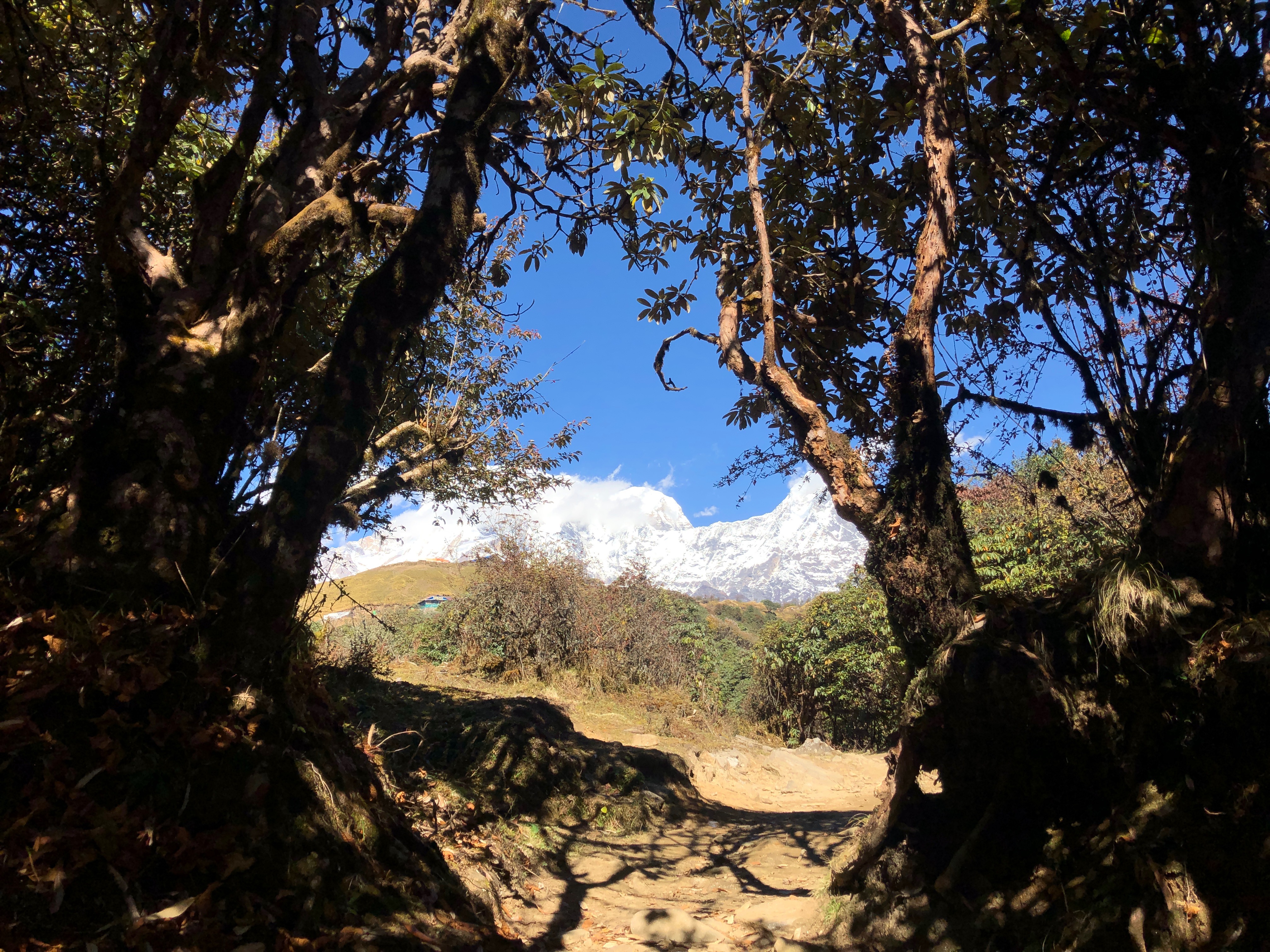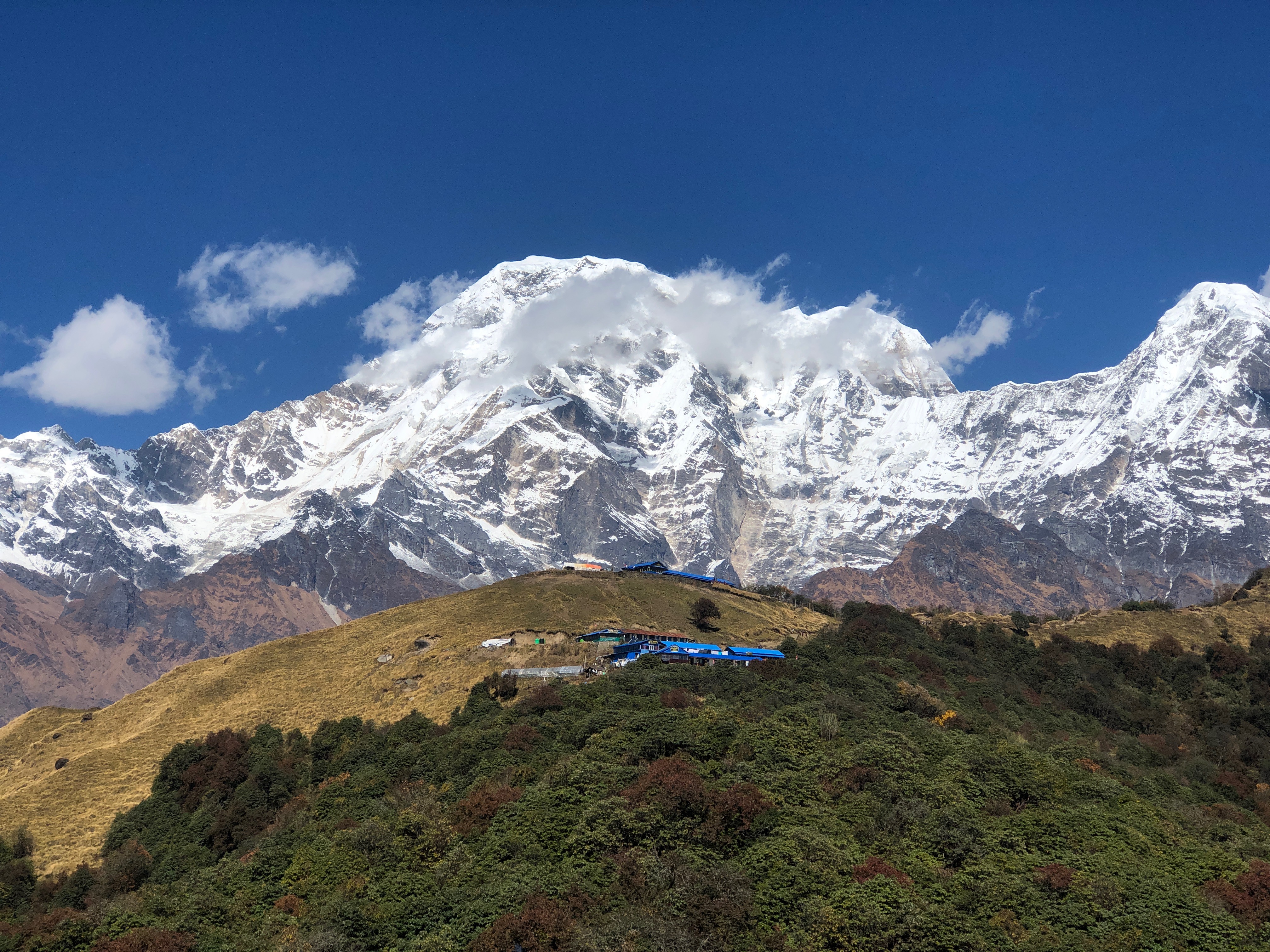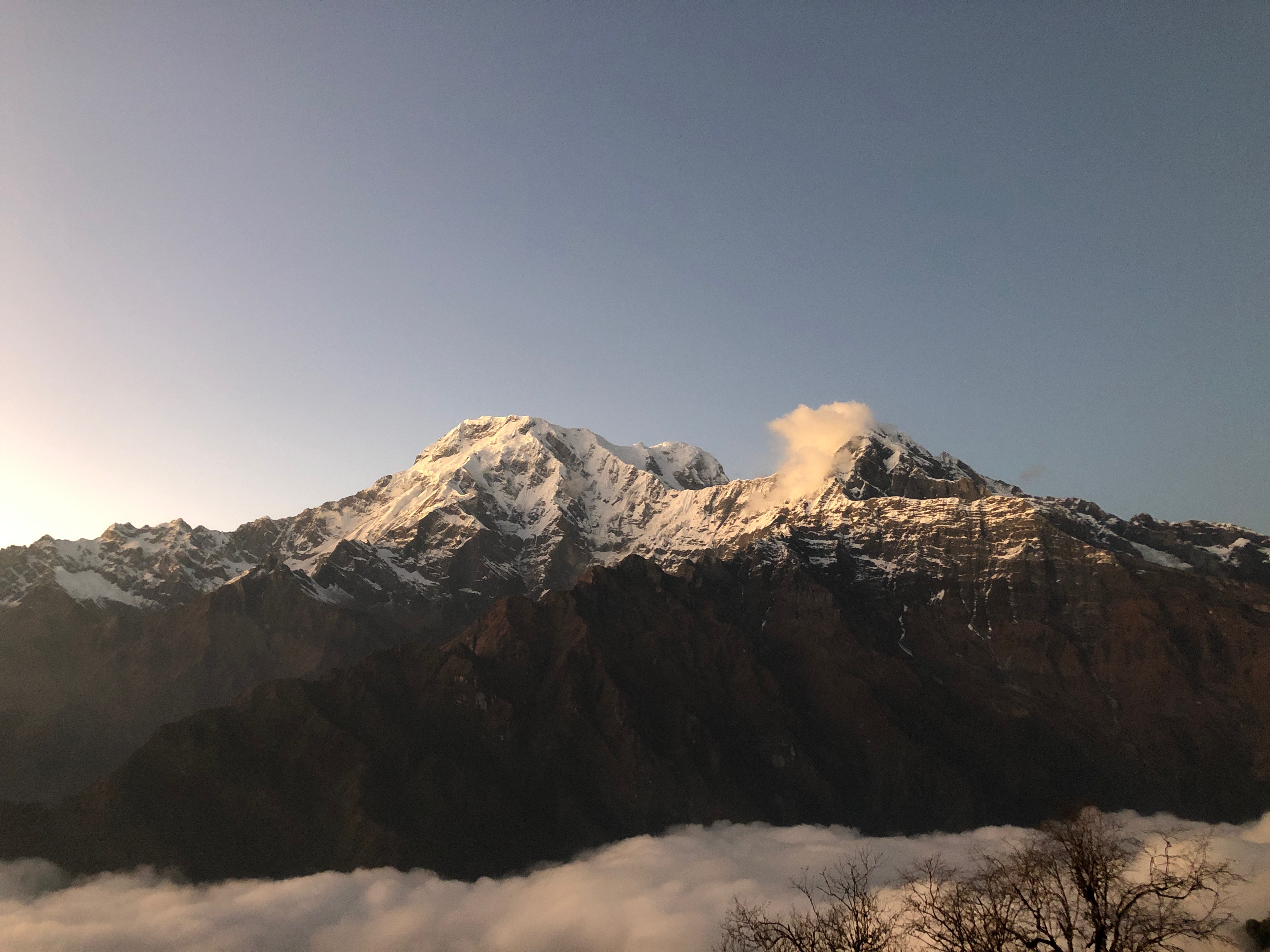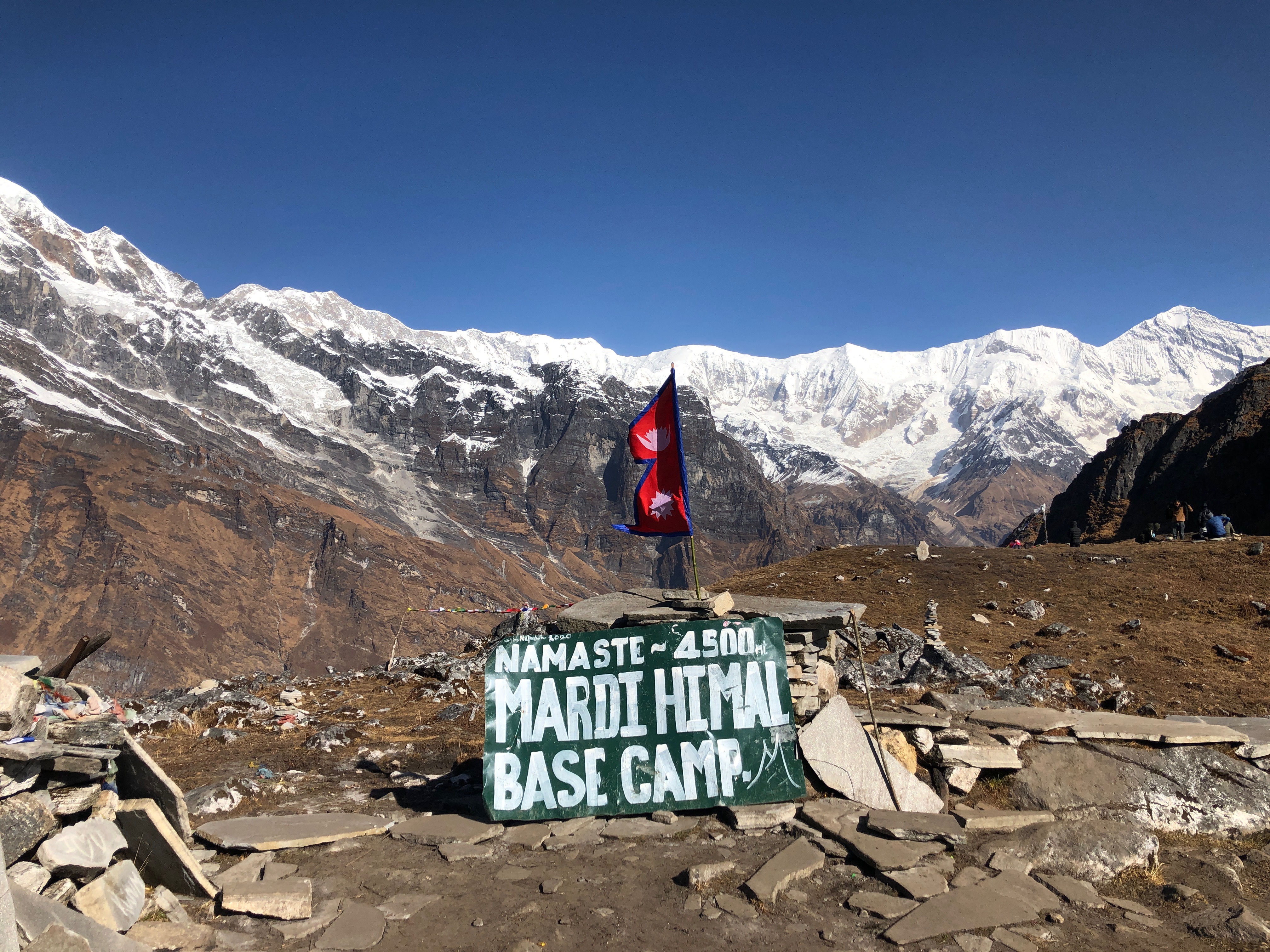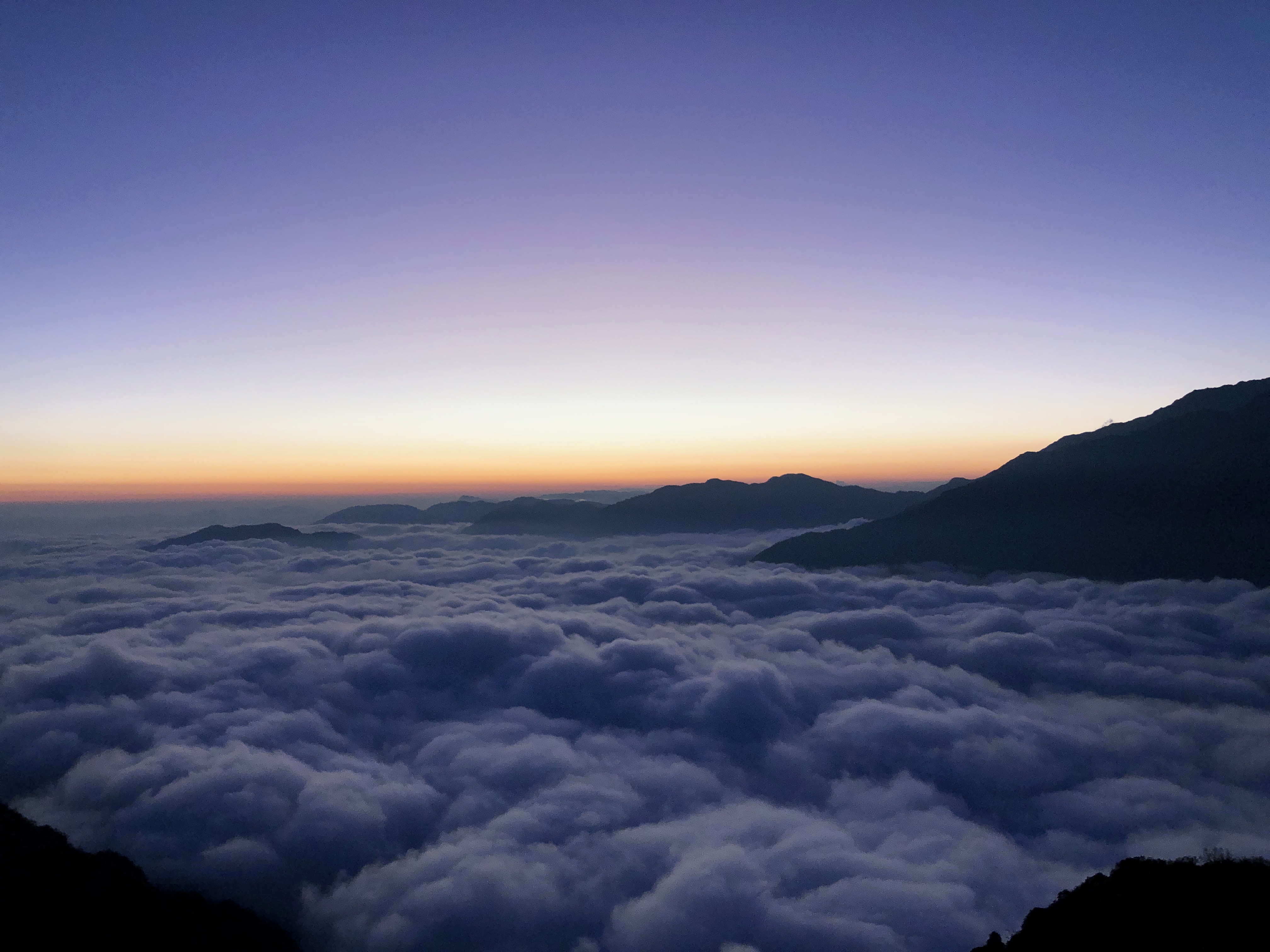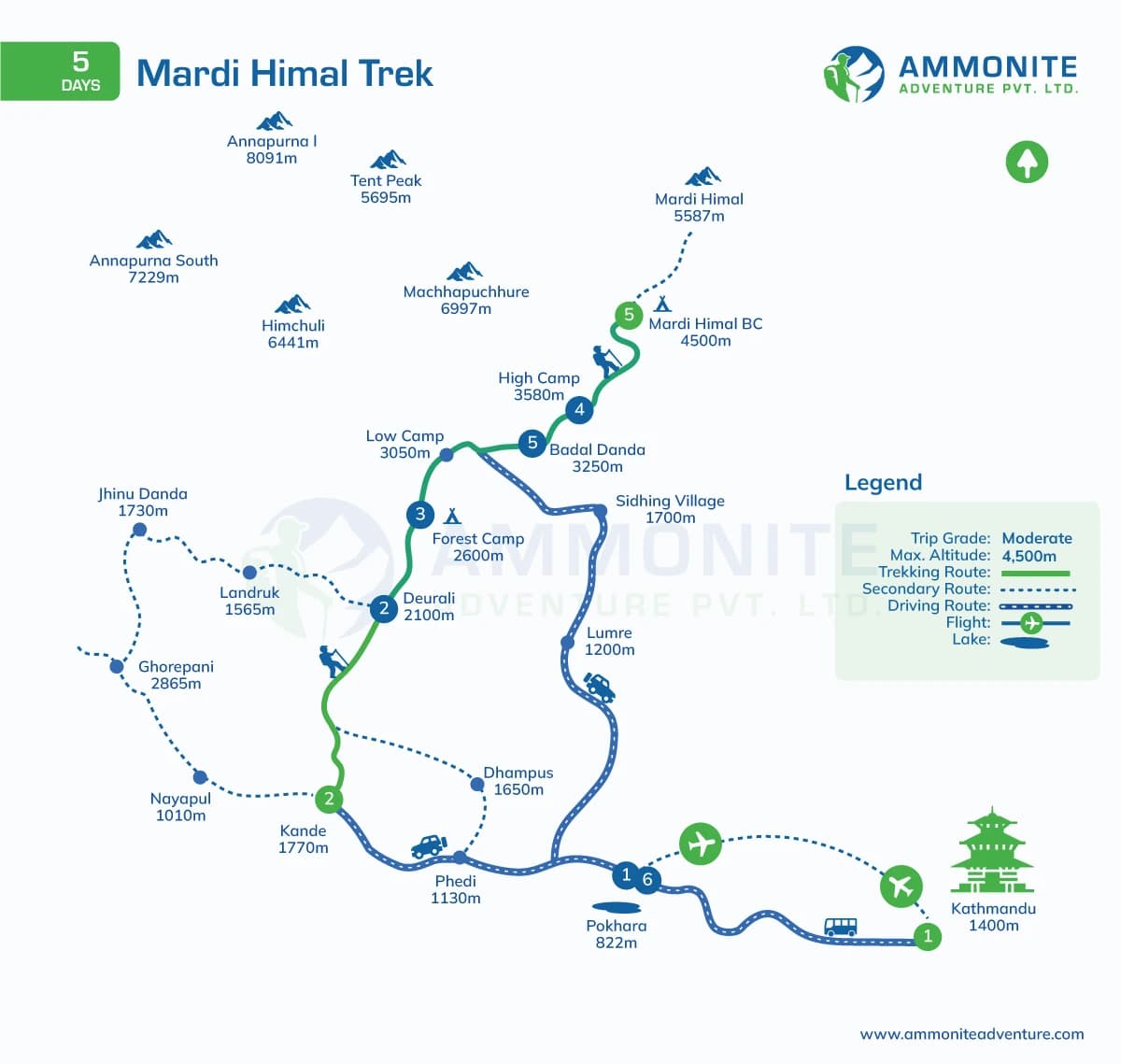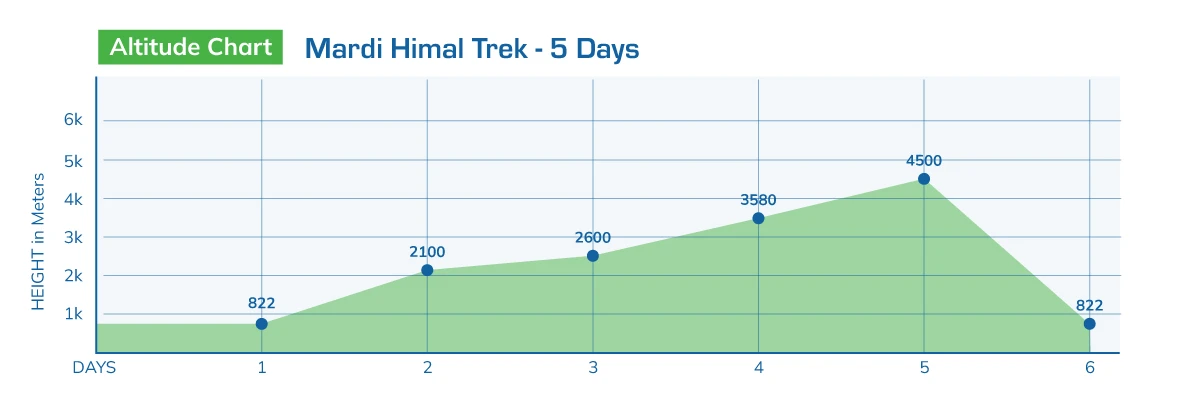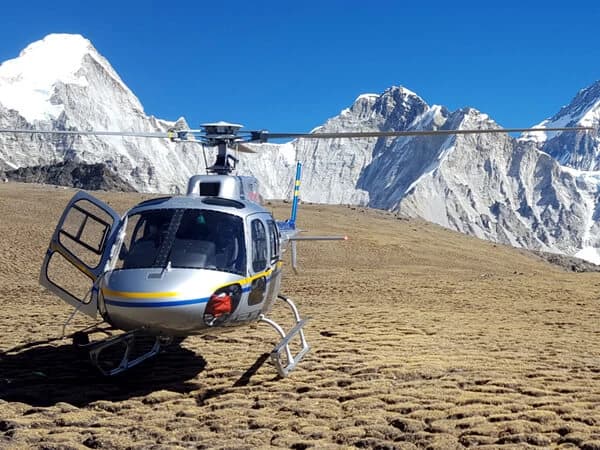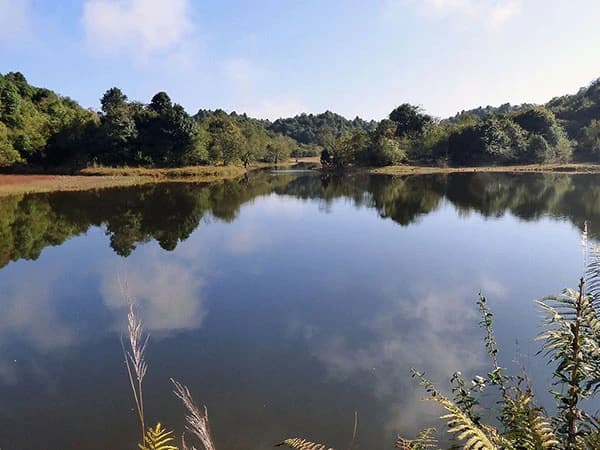We did the
Mardi Himal Trek - 5-day Trip Overview
The Mardi Himal Trek is ideal for those seeking a short and rewarding hike in the Annapurna region of Nepal. This trek is one of the most popular short-day hikes in Nepal. Stunning mountain views and beautiful landscapes fill it. You’ll pass traditional villages and lush green forests. The dramatic high alpine landscape is impressive in its grandeur. Annapurna, Machhapuchhre (Fishtail), and Hiunchuli loom in the background with an impressive presence.
This trip usually requires about 5 days from Pokhara. If you're short on time, we can adjust it to fit a 3 to 4-day plan. If you want a longer trek, we can mix it with other popular routes. These include Ghorepani Poon Hill, Khopra Ridge, and the Annapurna Base Camp trek.
The trek to Mardi Himal is great for beginners and families. The task varies in difficulty from easy to moderate. The Mardi Himal Trek is perfect for those who want to see the beauty of the Himalayas. You can enjoy the scenery and mountain life without tough hikes. The well-maintained trails and gentle slopes add excitement. Reaching the stunning Mardi Himal base camp makes this journey unique.
The journey starts with a scenic drive from Kathmandu to Pokhara. Then, you take a taxi to Kande. Once you arrive, the trek begins and ends for the day at Pitam Deurali. Your journey takes you through thick rhododendron forests. You'll see bright flowers and experience the traditional way of life of the local people. Giving you a striking introduction to the region and what to expect on the following day of the trek.
The Forest Camp is the last stop for the day. This quiet waypoint inspires you. It opens up to ridgelines, joining village paths and rich woodlands. Enjoy the sunlit views as you explore. The next day, we keep hiking up from Low Camp. We head to High Camp and then to the Mardi Himal base camp. On this hike, the stunning views of the Annapurna range will amaze you. A close-up of sacred Machhapuchhre offers a unique view of the area's nature and culture.
Trekkers in good shape are perfect for this trip. This is great for those who want to enjoy the beauty of the Himalayas in a shorter time. The Mardi Himal Trek is perfect for everyone, from beginners to experts. See amazing views, enjoy the lively culture, and make lasting memories on Nepal’s hidden paths.
Highlights of Mardi Himal Base Camp Trek
- Watch the golden sunrise from High Camp (3,550 m) and Mardi Himal Base Camp (4,500 m). Enjoy the stunning sights of Annapurna South, Hiunchuli, and Machapuchhre.
- You’ll be close to Machhapuchhre (Fishtail), Annapurna South, Hiunchuli, and Mardi Himal.
- Explore different landscapes. In a few days, you’ll see rhododendron forests, alpine meadows, and rugged ridgelines. You’ll also explore lowland forests.
- Enjoy fewer crowds than on other Annapurna trails. This makes your nature experience more tranquil.
- The paths from Badal Danda to High Camp offer 360° views of the landscape.
- Discover ridge flora and fauna. You might see langurs, musk deer, and Himalayan monals along the way.
- Gurung villages and terraced farms enrich your mountain trip. Then, you can head back to the comforts of Pokhara.
Why choose Mardi Himal Base Camp Short Trip?
The Mardi Himal Trek is a hidden treasure in the Annapurna region. It offers a fantastic trekking adventure in less than a week. This journey lets you explore the wild beauty of Nepal's Himalayas. The rugged trails and bright rhododendron flowers offer stunning views. They mix adventure with calm.
Here are some reasons to consider trekking to Mardi Himal Base Camp:
- The trek presents a significant challenge while remaining manageable. It combines challenging trails with beautiful scenery. This makes it great for beginners and seasoned trekkers alike.
- Cozy tea house stays: Along the trail, local tea houses and guest houses await you. They offer basic but cozy amenities. Enjoy warm meals and rest well to recharge for the next day.
- Try authentic local cuisines! The tea houses in the Annapurna region offer many food and drink options. There are plenty of options to match your tastes.
- Experience the unique cultures of the Gurung and Magar communities on the trail. Trekkers can discover their traditions, meals, and festivals. You might even see traditional music and dance performances that showcase local culture.
- The trail offers stunning mountain views and diverse wildlife. In spring, bright rhododendron forests add vibrant color to the landscape. You’ll walk through lush oak, hemlock, and maple forests, as well as alpine meadows. Look for a variety of birds and butterflies. You might also see larger animals like musk deer and langurs.
- Pleasant temperatures and weather conditions: Autumn and spring offer stable weather for trekkers. These seasons are the best times to visit Mardi Himal.
Mardi Himal is great for trekkers who want nice weather and stunning views. It's perfect for those looking for an easier hike. This itinerary provides a well-rounded experience of nature, culture, and adventure.
In 5 days, you will have an unforgettable journey. It’s a must-do for anyone visiting Nepal, whether you’re new to trekking or an expert.
What is the best season for the Mardi Himal Trekking?
Autumn and Spring seasons are considered the best time to visit the Mardi Himal since the weather is clear and stable. But expect crowdedness during these seasons because there will be a huge amount of traffic on the route. To avoid this, make sure to visit some weeks before or after the best season starts. i.e, before or after mid-February to early March and mid-September to early October.
December is also considered the best time to trek Mardi Himal as the weather is in favour for viewing the beautiful mountain views. It might be cold in the morning and evening outside the tea houses; however, the temperature might be suitable during the daytime, which is perfect for hiking hours.
September/ early September can also be a good time to trek Mardi Himal, but it mostly depends on the weather due to the Post-Monsoon. There are higher chances of you seeing the best view of Annapurna and the fishtail around mid-September, and also being able to avoid crowds. The local tea houses provide extra hospitality services during these times.
| Seasons | Temperature at Daytime | Temperature at Night time |
| Autumn | 10° c to 20° c | 5° c to 10° c |
| Spring | 15° c to 25° c | 0° c to 10° c |
| Winter | 5° c to 10° c | -5° c to 0° c |
| Summer | 20° c to 25° c |
10° c to 15° c |
The Mardi Himal Trek offers an unparalleled adventure in the heart of the Nepalese Himalayas. Even though it cannot be enjoyed throughout the year, Autumn emerges as the prime season, enhancing the pleasant weather, increasing the quality of majestic Mountain views, vibrant flora and fauna and cultural festivals.
Ammonite Adventure recommends that you take on this nature's grandeur during this season and embark on an extraordinary journey to Mardi Himal, where you create a memory of your lifetime
How difficult is the Mardi Himal Base Camp trek?
This trek presents a challenge of moderate difficulty. The highest overnight stay is at High Camp, which is 3,660 m. Novice trekkers may struggle in some areas. Let's break down the difficulty level for each day of the Mardi Himal trek:
- First Day: This is the easiest day. Trekkers walk for 4 to 5 hours from Kande to Pitam Deurali. It's a great warm-up, featuring gentle inclines and a series of stone steps. Novice trekkers with good fitness will find it manageable.
- Second Day: This day presents a moderate level of challenge. Trekkers will hike for 5 to 6 hours, gaining 500 m in altitude. There are no major stops along the forest trail, so refreshment breaks will be few. While the trail isn’t steep, the isolation makes it a long and mentally tiring day.
- Third Day: The difficulty experiences a slight increase. Trekkers hike from Forest Camp to High Camp Ridge for 6 to 7 hours. The steady uphill climb and higher altitude make it tough. The narrow ridge trail in the final sections adds to the effort and exposure.
- Fourth Day: This is the most challenging day. The hike from High Camp to Mardi Himal Base Camp (4,500 m) and then to Badal Danda takes about 6 to 7 hours. You'll climb 950 m up and descend 1,300 m. The early cold start and steep, exposed route raise the difficulty. The risk of altitude sickness is present, making the trek challenging. The long descent at the end adds to the fatigue.
- Fifth Day: This day is less challenging as trekkers descend to around 1,500 m. The trek from Badal Danda to Siding takes 4 to 5 hours. Hiking downhill through the forest can be tough on the knees. Slippery conditions during the monsoon or early morning dew can make it thrilling. After arriving in Siding, a scenic drive to Pokhara marks the end of the trek.
How should I prepare for the Mardi Himal trip?
Proper preparation is key to a successful and memorable trek. Concentrate on physical training. Also, get used to the environment. Pack with careful consideration and maintain awareness of required permits and safety rules.
Physical Training:
- Cardio: Engage in activities like cycling, running, or swimming to boost your stamina.
- Strength Training: Build your leg, core, and back muscles. This helps you handle the trail's ups and downs while carrying your backpack.
- Hiking: Train on various terrains while wearing a weighted backpack. This helps you prepare for real conditions.
- Gradually raise your exercise intensity to avoid injury and adapt.
Safety Measures:
- Stay Updated: Research the trekking route and potential obstacles.
- Emergency Contacts: Keep emergency contacts handy for quick help.
- Avoid solo trekking: Trek with a group of 3 to 4 people, or hire a professional guide.
- Respect the Host Community: Manage waste responsibly and show appreciation for the local culture.
Acclimatization:
- Hydration: Drink plenty of water throughout the trek.
- Rest Days: Plan acclimatisation days to help your body adjust to altitude changes.
- Incorporate balanced diet meals during the trek.
Mardi Himal trek route
Day 1: Pokhara → Kande → Forest Camp (2,500 m)
-
Drive from Pokhara to Kande (45 min)
-
Start trekking: Kande → Australian Camp → Pothana → Pitam Deurali
-
From Deurali, take the Mardi Himal ridge trail to Forest Camp
Trek duration: 5–6 hours
Highlights: Forest trails, views of Annapurna South and Machhapuchhre.
Day 2: Forest Camp → Low Camp → Badal Danda (3,210 m)
-
Climb through dense rhododendron forest
-
Continue to Low Camp
-
Stay at Badal Danda for better views and fewer crowds
Trek duration: 4–5 hours
Highlights: Open ridge, close views of Fishtail (Machhapuchhre).
Day 3: Badal Danda → High Camp (3,580 m)
-
Easy, gradual ridge trail with 360° views
Trek duration: 3–4 hours
Highlights: Panorama of Annapurna, Dhaulagiri, Manaslu; photogenic ridgeline.
Day 4: High Camp → Mardi Himal Viewpoint (4,250 m) → Return to Low Camp
-
Early morning summit push to Mardi Himal Viewpoint
-
Optional extension to Mardi Base Camp (4,500 m) if weather & fitness allow
-
Return to High Camp for breakfast
-
Descend to Low Camp
Trek duration: 7–8 hours total
Highlights: Sunrise over the Annapurna range, dramatic ridge walk.
Day 5: Low Camp → Siding Village → Pokhara
-
Descend through the forest to Siding (easy route down)
-
Jeep from Siding back to Pokhara (3 hours)
Trek duration: 3–4 hours
Highlights: Traditional Gurung village, warm climate, beautiful farmland.


